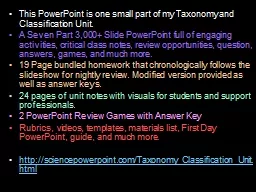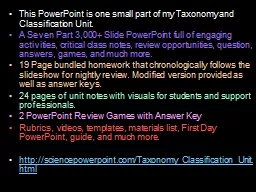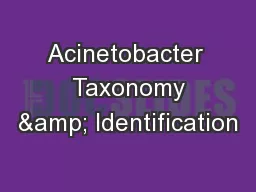PPT-This PowerPoint is one small part of my Taxonomy and Classi
Author : calandra-battersby | Published Date : 2017-05-06
A Seven Part 3000 Slide PowerPoint full of engaging activities critical class notes review opportunities question answers games and much more 19 Page bundled homework
Presentation Embed Code
Download Presentation
Download Presentation The PPT/PDF document "This PowerPoint is one small part of my ..." is the property of its rightful owner. Permission is granted to download and print the materials on this website for personal, non-commercial use only, and to display it on your personal computer provided you do not modify the materials and that you retain all copyright notices contained in the materials. By downloading content from our website, you accept the terms of this agreement.
This PowerPoint is one small part of my Taxonomy and Classi: Transcript
Download Rules Of Document
"This PowerPoint is one small part of my Taxonomy and Classi"The content belongs to its owner. You may download and print it for personal use, without modification, and keep all copyright notices. By downloading, you agree to these terms.
Related Documents














